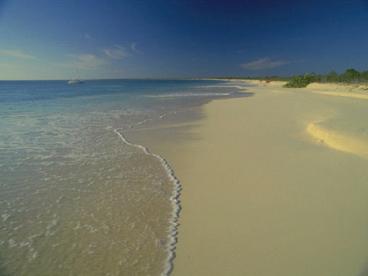Ocean sediment - PowerPoint PPT Presentation
1 / 19
Title:
Ocean sediment
Description:
Ocean sediment. Various materials settle through the water column and accumulate ... Layers represent a record of Earth history, including: Movement of tectonic plates ... – PowerPoint PPT presentation
Number of Views:81
Avg rating:3.0/5.0
Title: Ocean sediment
1
(No Transcript)
2
(No Transcript)
3
Ocean sediment
- Various materials settle through the water column
and accumulate on the ocean floor - Layers represent a record of Earth history,
including - Movement of tectonic plates
- Past changes in climate
- Ancient ocean circulation patterns
- Cataclysmic events
4
Collecting ocean sediment
- Specially designed ships collect cores by rotary
drilling - Cores allow scientists to analyze ocean sediment
Figure 4B
5
The 4 main types of sediment
- Lithogenous composed of fragments of
pre-existing rock material - Biogenous composed of hard remains of
once-living organisms - Hydrogenous formed when dissolved materials
come out of solution (precipitate) - Cosmogenous derived from outer space
6
Origin of lithogenous sediment
- Forms by
- Weathering breakup of exposed rock
- Transportation movement of sediment
- Deposition settling and accumulation
Sediment-transporting media
Figure 4-4
7
Dust plume over the Red Sea
8
Dust haze over the Atlantic Ocean
9
(No Transcript)
10
Lithogenous sediment composition
- Most lithogenous sediment is composed of quartz,
which is - Abundant
- Chemically stable
- Durable
Figure 4-5
11
Lithogenous sediment texture
- Texture includes
- Grain size
- Sorting
- Rounding
- Maturity
Figure 4-7
12
Distribution of lithogenous sediment
- Lithogenous sediment occurs as
- Neritic (nearshore) deposits
- Beaches
- Continental shelves
- Turbidites
- Glacial-rafted debris
- Pelagic (deep ocean floor) deposits
- Abyssal clay
13
(No Transcript)
14
(No Transcript)
15
Realistic Shelf Sediment Profile
16
(No Transcript)
17
Contrast Sedimentation on
______ and _______ Margins
Fig. 4-5
18
Sedimentation Processes on ________ ________
Fig. 4-7
19
Development of Shelf Sediments on a _______ _____
Present
Known from _____ and _____ data
Fig. 4-6






























